Theory 1
Polar coordinates are pairs of numbers
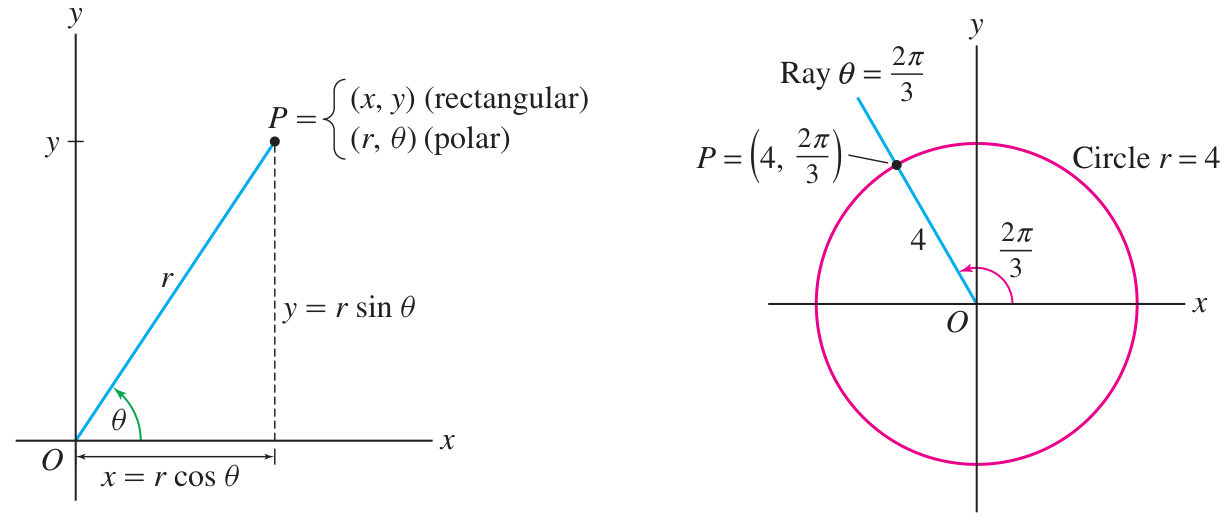
Converting
Polar coordinates have many redundancies: unlike Cartesian which are unique!
- For example:
- And therefore also
(negative can happen)
- And therefore also
- For example:
for every - For example:
for any
Polar coordinates cannot be added: they are not vector components!
- For example
- Whereas Cartesian coordinates can be added:
The transition formulas
require careful choice of .
- The standard definition of
sometimes gives wrong
- This is because it uses the restricted domain
; the polar interpretation is: only points in Quadrant I and Quadrant IV (SAFE QUADRANTS) - Therefore: check signs of
and to see which quadrant, maybe need -correction!
- Quadrant I or IV: polar angle is
polar angle is
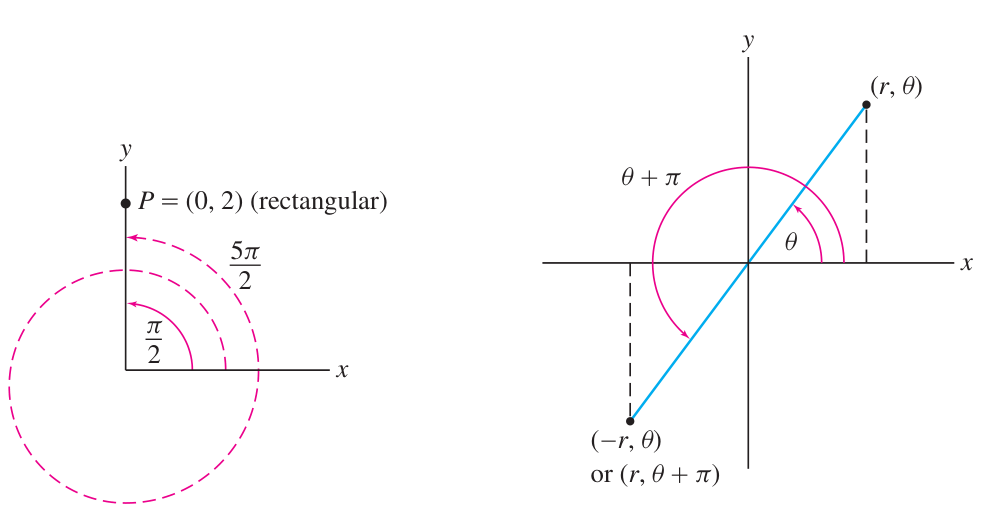
Equations (as well as points) can also be converted to polar.
For
For
- For example:
Theory 2
To draw the polar graph of some function, it can help to first draw the Cartesian graph of the function. (In other words, set
This Cartesian graph may be called a graphing tool for the polar graph.
A limaçon is the polar graph of
The shape of a limaçon is determined by the value of
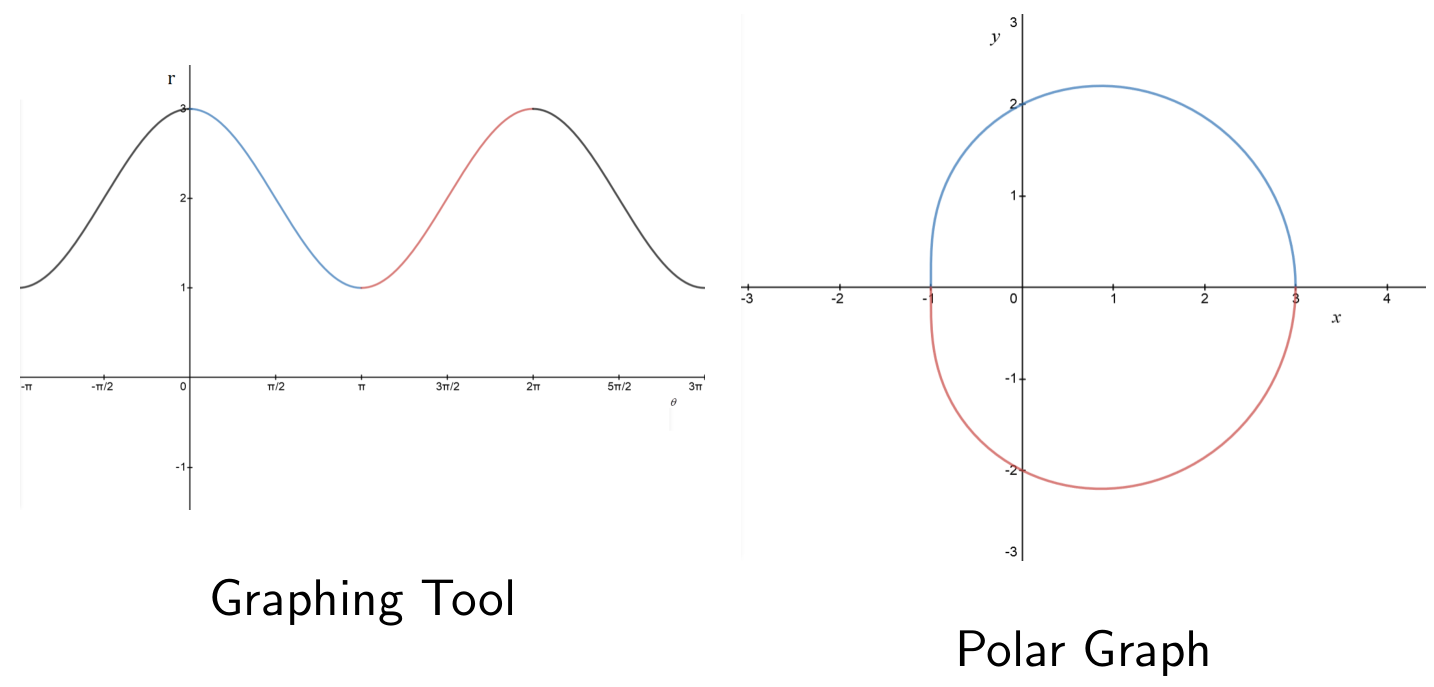
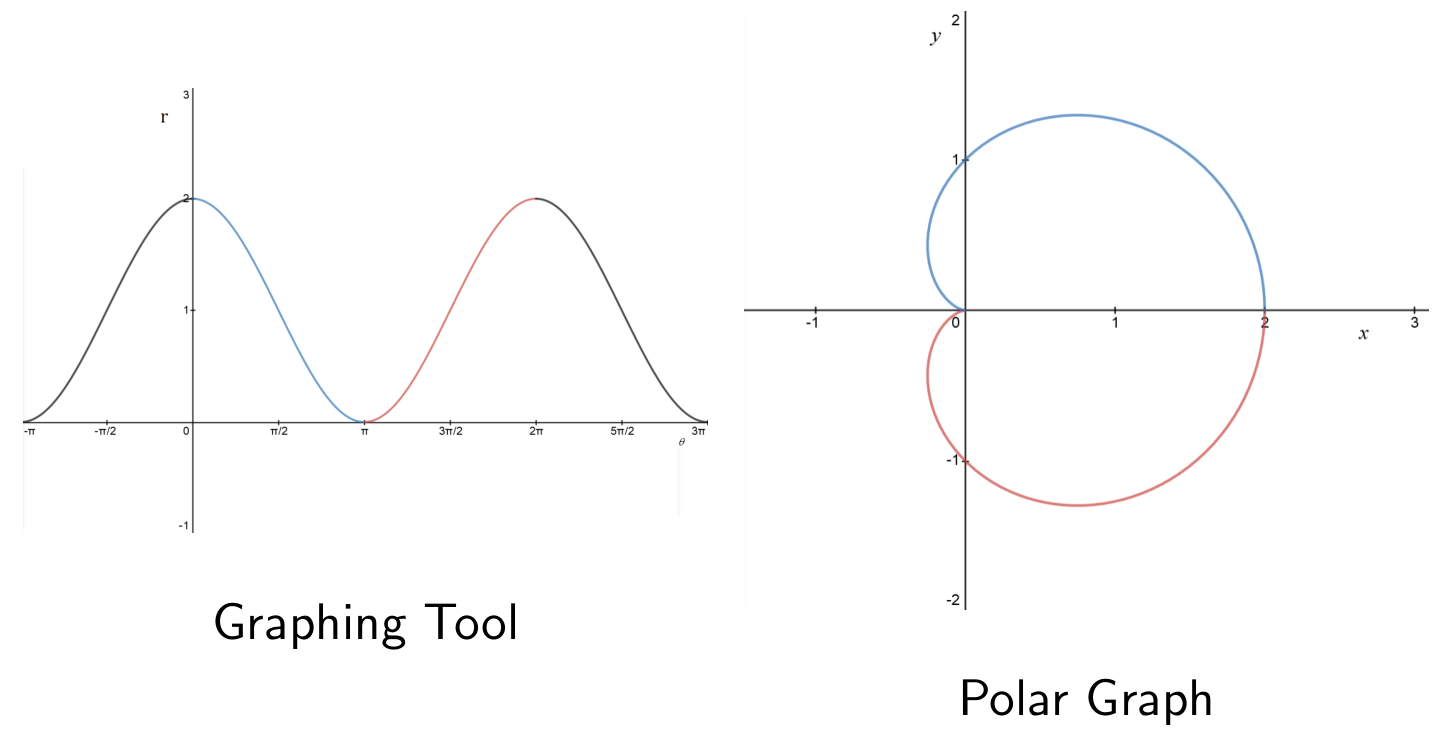
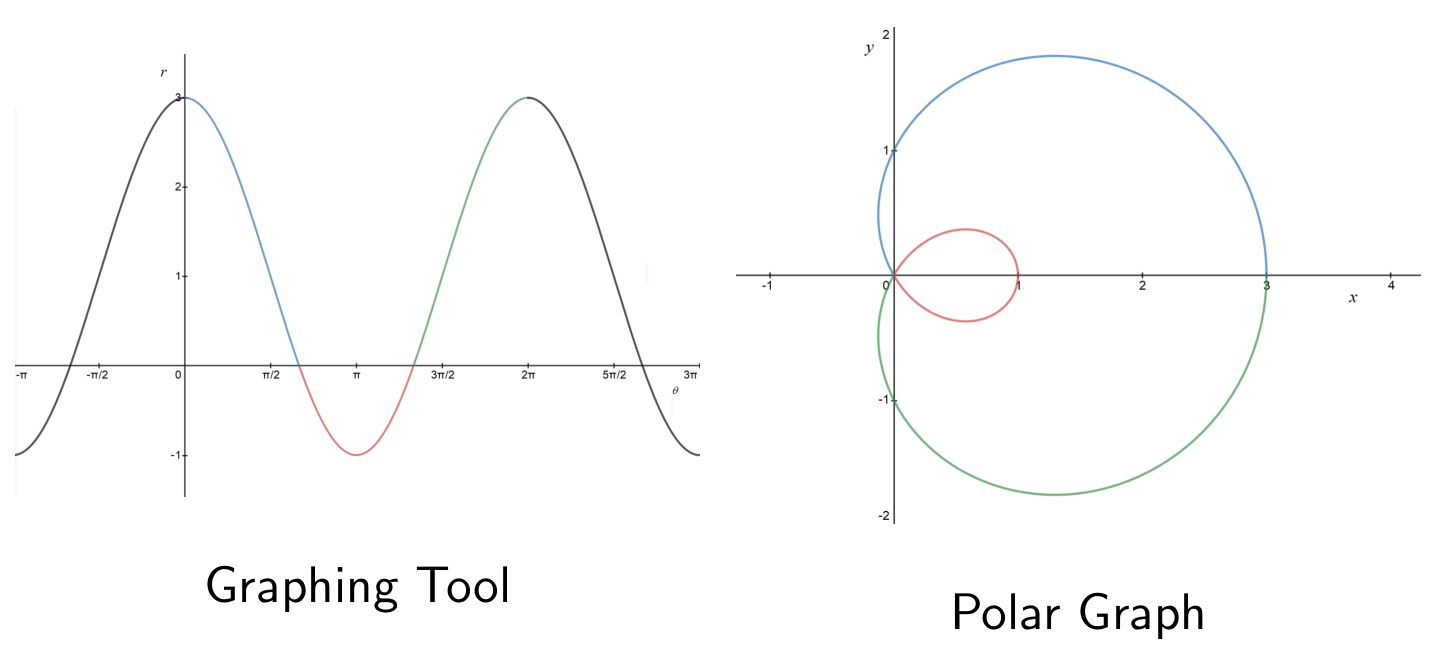
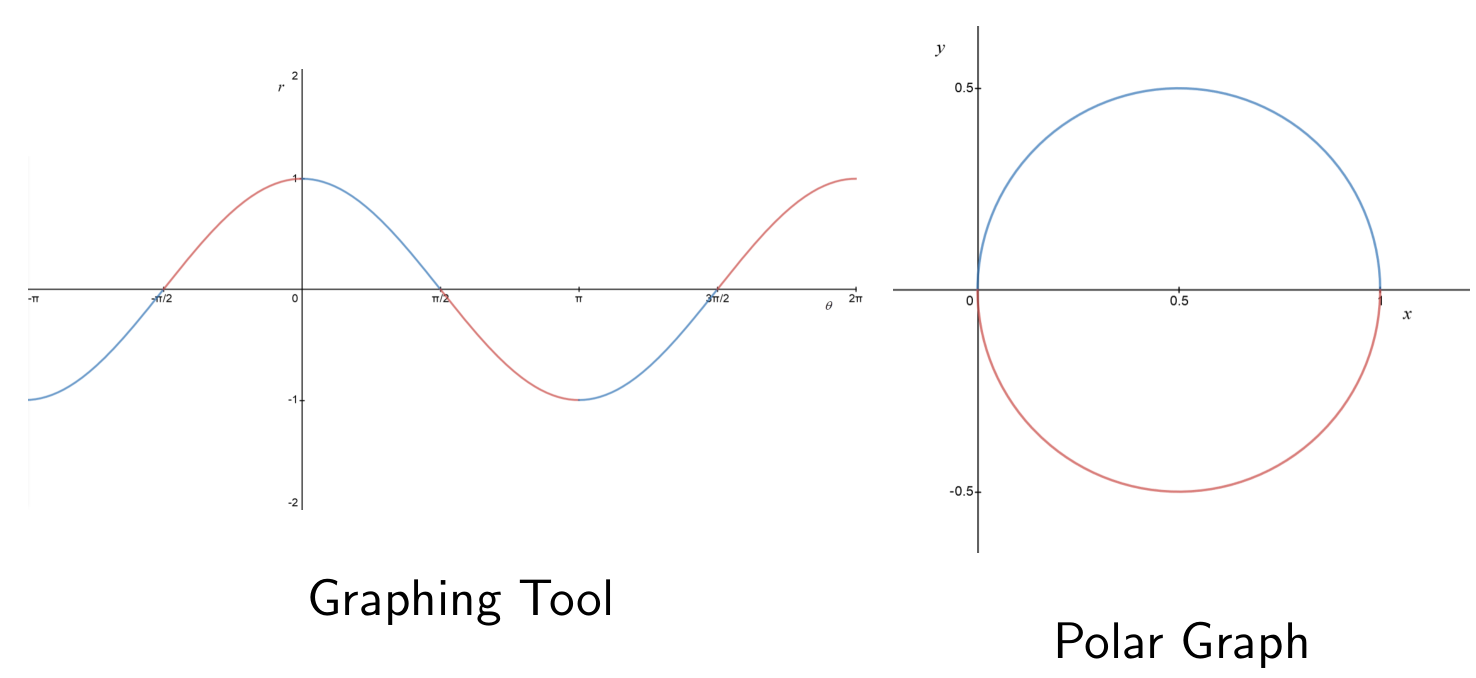
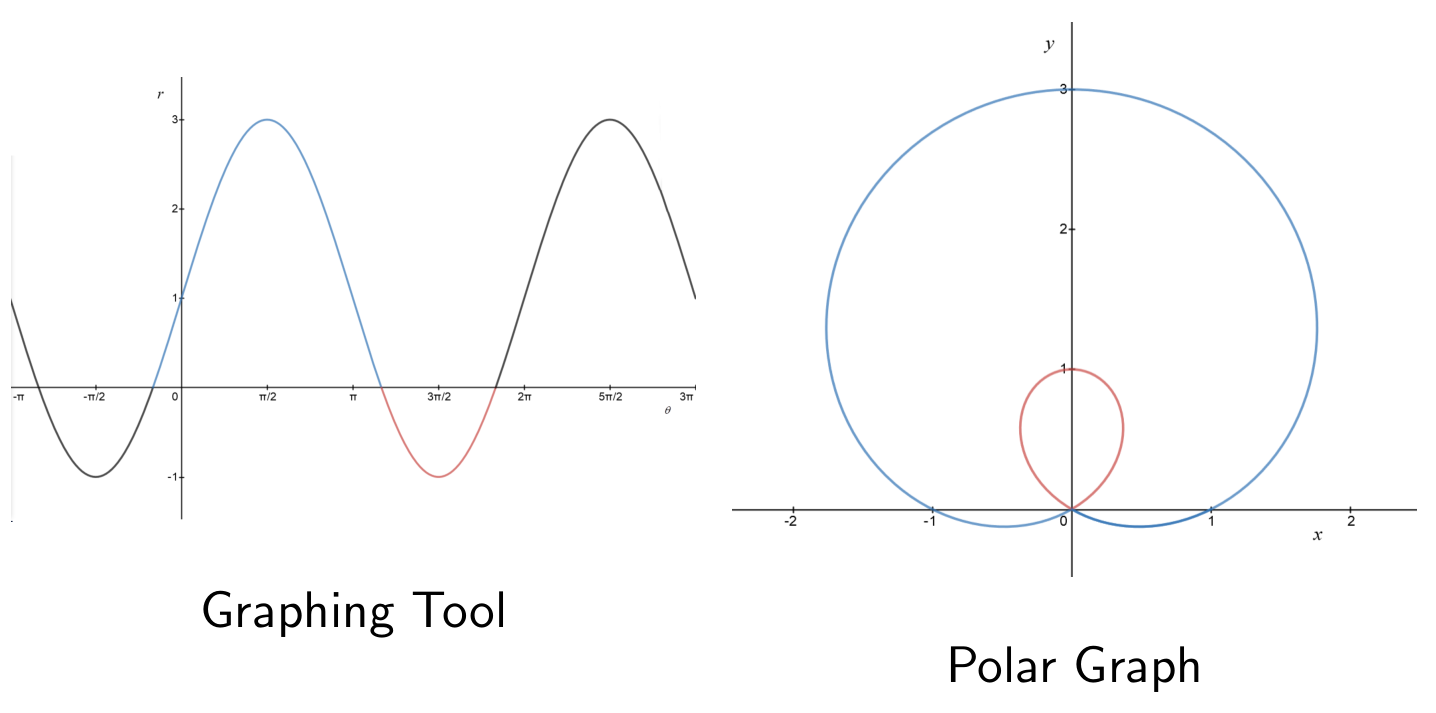
Transitions between limaçon types,

Notice the transition points at
The flat spot occurs when
- Smaller
gives convex shape
The cusp occurs when
- Smaller
gives dimple (assuming ) - Larger
gives inner loop
Theory 3
Roses are polar graphs of this form:
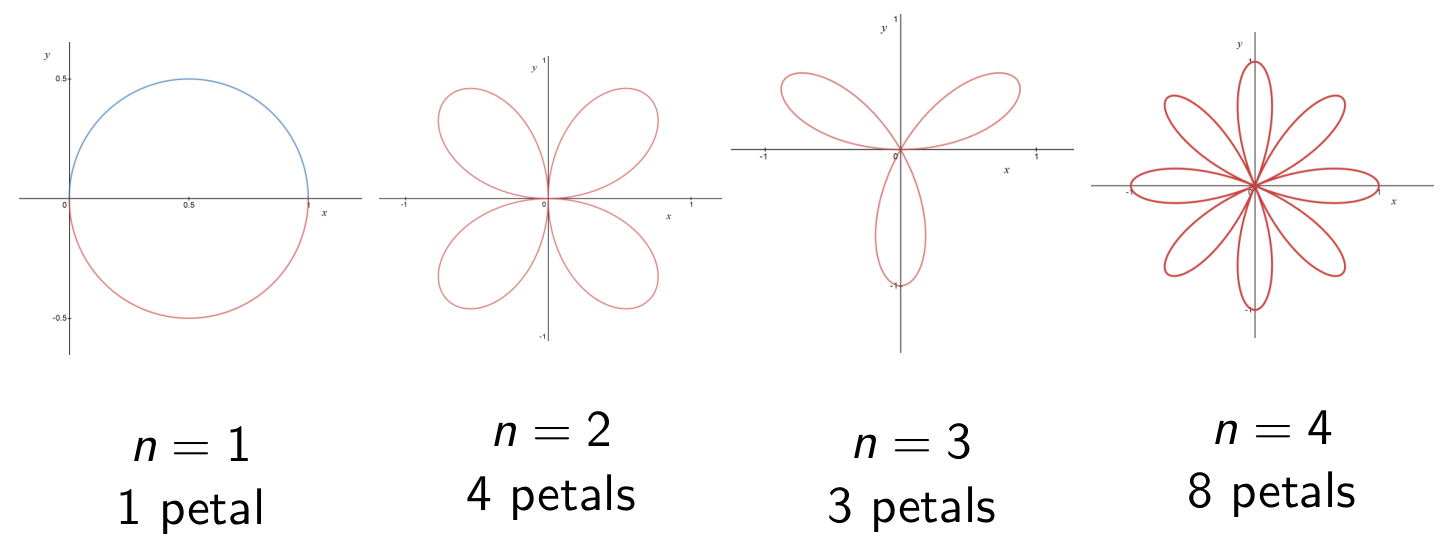
The pattern of petals:
(even): obtain petals - These petals traversed once
(odd): obtain petals - These petals traversed twice
- Either way: total-petal-traversals: always